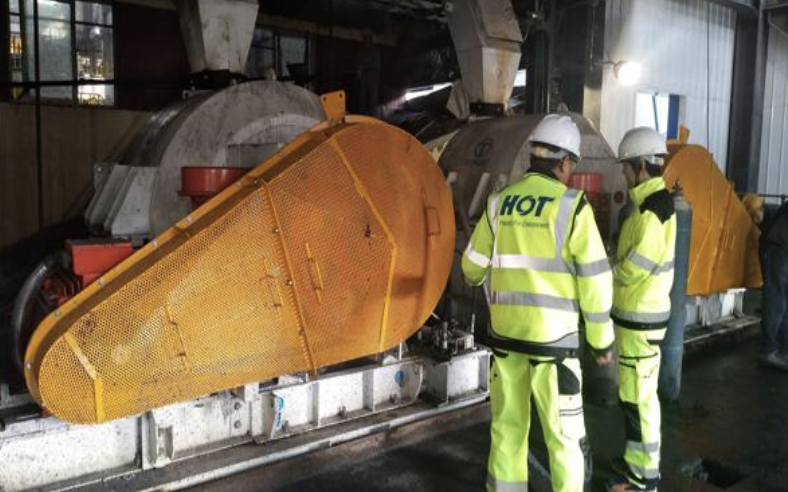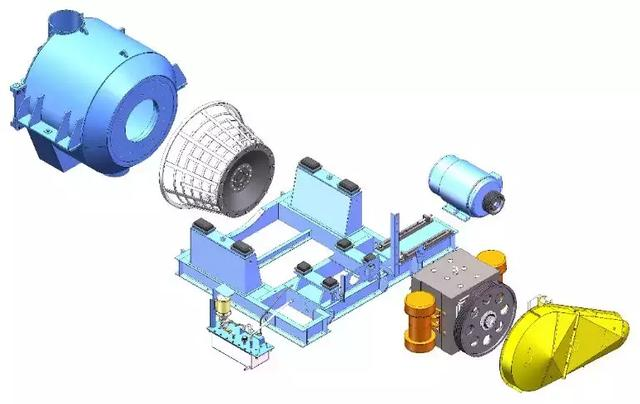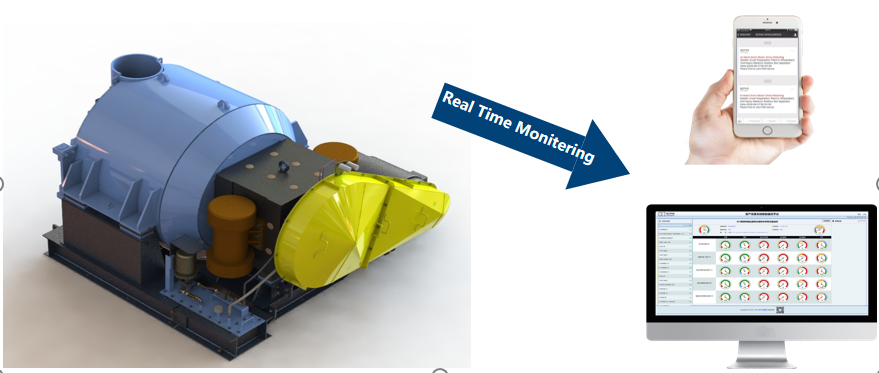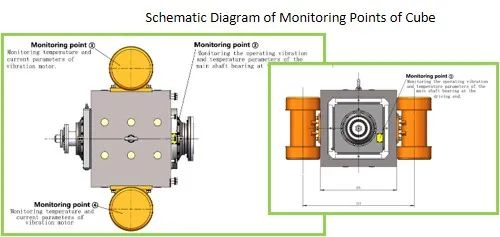
The research aims to improve the quality of the clean coal by reducing the moisture content, ensuring the operation of the coal preparation plant efficiently, and improving overall margin.
The research mainly focuses on studying the effects of working parameters, structure configuration, and unified force field on the dewatering effect of fine coal, developing a new high-efficiency centrifuge and dewatering technology for fine coal, researching the influence of airflow properties and jet structure on the dewatering effect of fine coal in the material transfer process, and developing the core airflow field generation scheme for air-enhanced dewatering.
The critical designs of the new high-efficiency fine coal centrifuge are created, including a research platform for the essential structures of the new centrifuge, a study of the influence of the sieve basket structure on the airflow flow during the dewatering process, and the development of a high-efficiency feeding structure. The design of the new high-efficiency large-scale fine coal centrifuge is also studied, and an intelligent control system is set up to monitor the airflow parameters in the operation process of the centrifuge.

In addition, a predictive maintenance system is built, which monitors the core components of the centrifuge in real time and predicts malfunctions ahead of time to avoid unexpected shutdowns. The solid particle monitoring system is also installed to monitor the solid particle content in the centrifugal liquid and analyze the wear of the sieve basket to replace the worn parts in time and reduce the abnormal shutdowns during production.

Real-time alerts are sent to production personnel so they can be informed and acted upon in the first instance.
Diagram of cube monitoring points below

Influencing Factors of De-watering Effect of Horizontal Centrifuge:
Feeding Moisture
The de-watering effect of the horizontal centrifuge is closely related to the feed concentration. Taking the HCC1400 horizontal centrifuge as the research object, the de-watering effect test was carried out by increasing the high-pressure water valve in the feeding hopper and regulating the feed concentration by the high-pressure water volume. The test results showed that with the increase in the feed concentration, the moisture content of the products decreased. On the other hand, when the feed concentration was less than 20%, the moisture content of the product was high, which seriously affected the product quality. At the same time, low-concentration materials also accelerated the wear of the sieve basket, which was not conducive to improving the efficiency of the centrifuge. When it was more than 20%, the product moisture had a negative inverse relationship with the feed concentration. However, the higher the feed concentration, the better because when the feed concentration is too high, it is easy to cause the blockage of the hopper of the centrifuge, which is not conducive to improving the de-watering efficiency of the centrifuge. Therefore, when using the horizontal centrifuge for the de-watering of materials, the feed concentration should be reasonably controlled to ensure that the moisture content of the product reaches the best, which not only can improve the product quality but also can prolong its service life and improve the efficiency of use.
Sieve Basket Slot Width
The sieve basket is the critical component of the horizontal centrifuge, mainly composed of upper and lower flanges, reinforcing ribs, and cone sieves. Fan-shaped sieves generally weld the sieve. When the sieve basket is working, it has to be seriously impacted by the feed, and if it is misused, it is easy to replace. The size of the sieve slot directly affects the de-watering effect. If the sieve slot is too small or the new sieve basket is returned, the de-watering effect is worse. With the sieve basket, the place gradually increased due to wear and tear, and the de-watering effect tended to increase. The main reason was that the small sieve slot was easy to block the mud and reduced the sieve width, affecting feed moisture passage and increasing product moisture content. Balasu Coal Mine of a specific Selection Plant studied the relationship between sieve slot width and de-watering effect with HCC1400 horizontal centrifuge. The test results showed that when the sieve slot width increased from 0.25mm to 0.35mm, the product moisture decreased from 16% to 12%, and the de-watering effect was improved. But the sieve slot is too large. In that case, it will affect the recovery of the coarse mud, so the reasonable sieve slot of the sieve basket should be determined by taking into account the recovery of the mud and the de-watering effect.
Feeding Particle Size
Material particle size composition affects the permeability of the material layer. For example, when there are more fine particles, they are easy to fill in the coarse particles to form a material layer with good compaction and poor permeability. On the other hand, when there are more coarse particles in the material, the gaps created by the coarse particles are significant. As a result, the difficulty of water passing through the screen basket is significantly reduced, which is conducive to reducing the product's water content, just like fine river sand can form a waterproof layer. In contrast, coarse river sand has good permeability. Theoretical studies and practice have shown that reducing the size of the feed material is beneficial for reducing the water content of the products and improving their quality.
Feeding speed
Tests were conducted on-site to study the relationship between feeding speed and de-watering. With the setting of feed concentration as 30%, the falling height was set at 8m, 6m, 4m, and 2m, respectively, equivalent to changing the feed energy by changing the falling size. The higher the falling height, the faster the feeding speed, so the water content of the tested product can be obtained at different feed speeds. The results showed that when the falling height was 8m, the water content of the product was 27%; when the falling size was 6m, the water content of the product was 21%; when the falling height was 4m, the water content of the product was 15%; and when the falling size was 2m, the water content of the product was 2%. It can be seen that although the falling height is not inversely proportional to the water content linearly, within certain limits, with the increase of the falling size, that is, with the rise of the feeding speed, the water content of the product increases. Given this, to improve the de-watering effect of horizontal centrifuge, the feeding rate should be determined reasonably; that is, the feeding speed can be controlled by changing the falling height.
Methods to improve the de-watering effect of the centrifuge
Reasonable control of feed water, regular cleaning of selected material screens, ensure suitable feed concentration, according to the centrifugal de-watering effect and material concentration research results, should ensure that the feed concentration range is 40%-65%, at the same time, can be according to the need to increase the high-pressure pipe to adjust the feed concentration, but also solve the problem of feed tank plugging caused by a high concentration of material.
From the analysis of feed particle size and centrifugal de-watering effect, it can be seen that too much fine material is not conducive to improving the de-watering of the centrifuge, so the content of fine material should be strictly controlled. At the same time, to prevent the low permeability material layer formed by fine material from affecting the de-watering effect, the screen gap should be washed regularly according to the needs to ensure the best de-watering effect.
Feed speed has a significant impact on the de-watering effect. To improve the de-watering effect of the centrifuge, the falling height can be appropriately reduced to reduce the feed speed, or the feed tank can be given a sloping buffer tank to mitigate the feed speed properly.
Select the screen basket with the width of the screen gap that meets the de-watering effect according to the needs, and take care to prevent the screening gap from being blocked and affecting the de-watering.